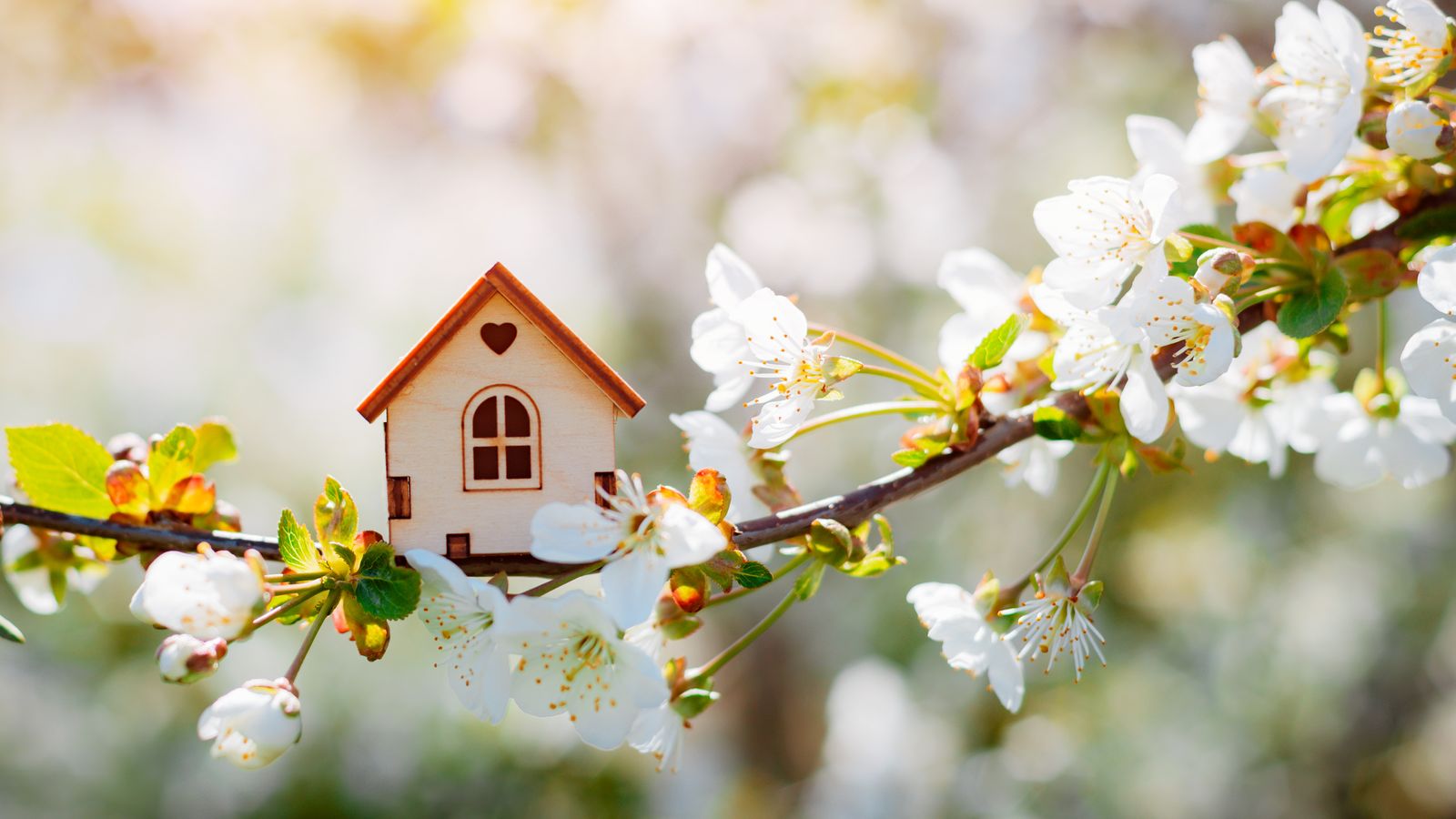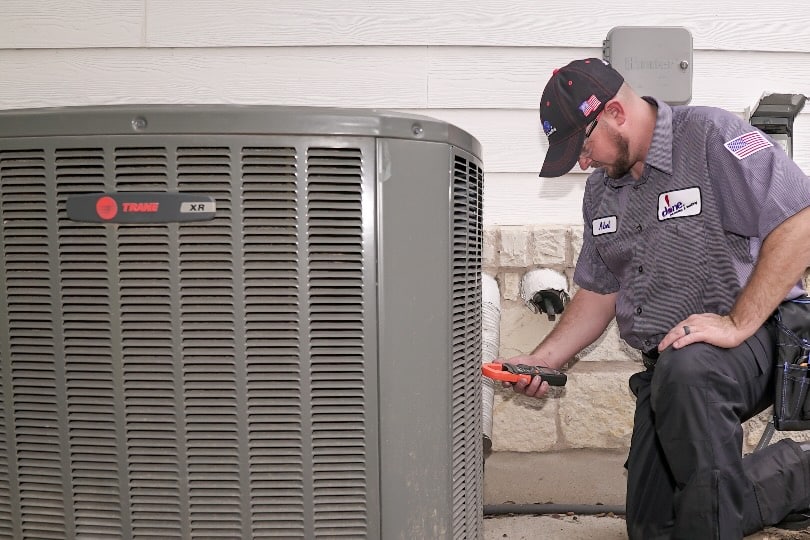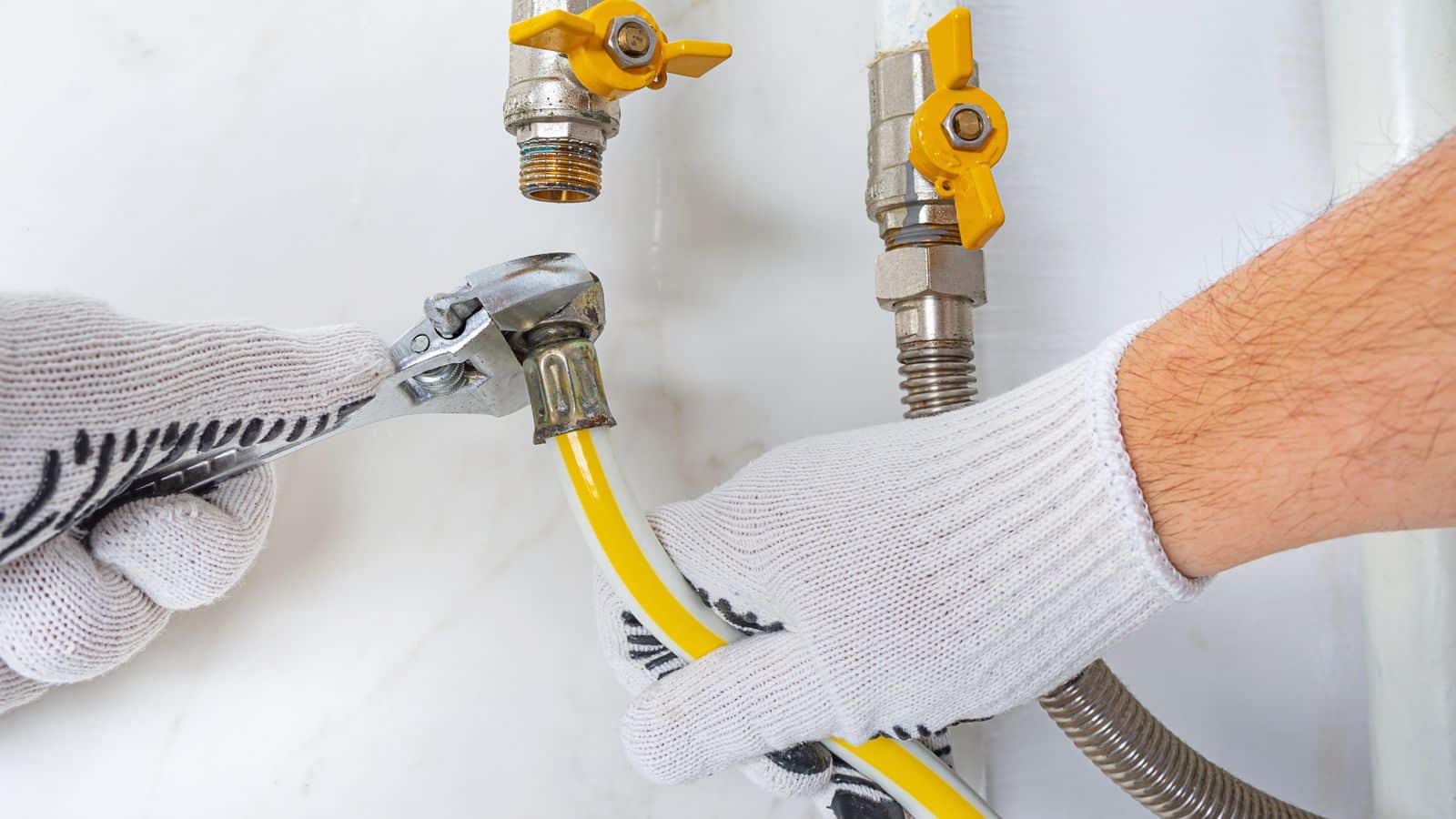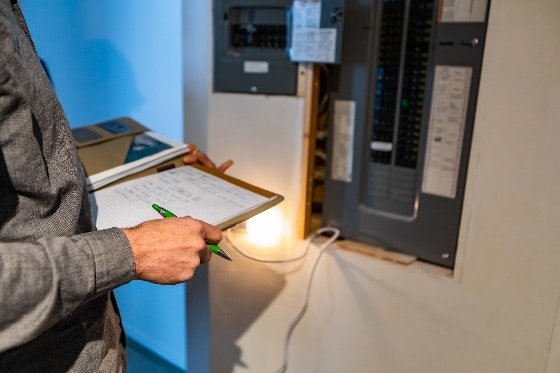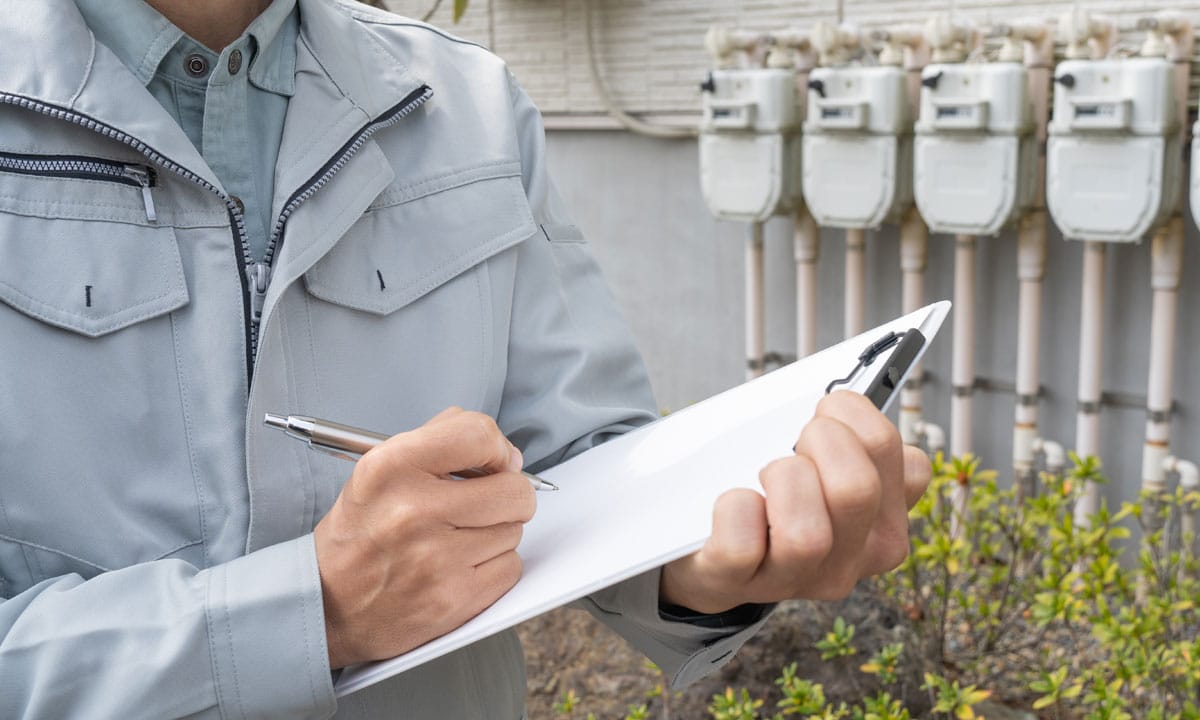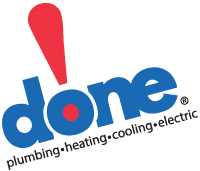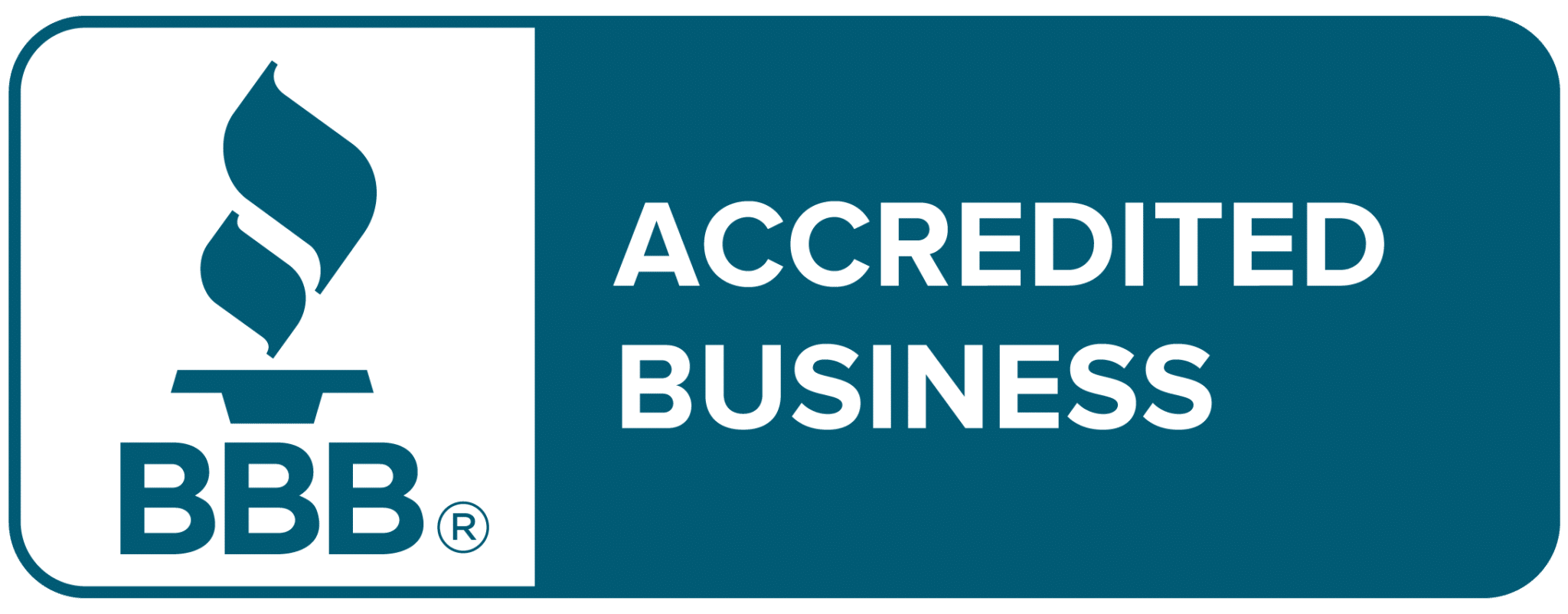Spring is the perfect time to stay ahead of home maintenance. After months of cold weather, your home’s HVAC, plumbing, electrical, and other essential systems may need attention before summer temperatures rise. Tackling key maintenance tasks now can help prevent costly repairs and ensure everything runs efficiently.
At Done! Plumbing, Heating, Cooling & Electric, we make seasonal maintenance simple with expert service and proactive solutions. Use this spring home maintenance checklist to focus on the most important tasks before the heat sets in.
1. Inspect Your Roof
Winter weather can weaken your roof, even if damage isn’t immediately visible. Spotting problems early can prevent leaks, structural issues, and costly repairs.
- Look for damaged or missing shingles. Wind, ice, and heavy snow can loosen or crack shingles. Even small gaps can let water seep in.
- Check for signs of leaks or water damage. Inside, watch for ceiling stains, peeling paint, or damp attic insulation. Outside, dark spots or sagging areas may indicate moisture issues.
- Schedule a professional roof inspection. Some roofing problems are hard to see from the ground. A professional can check for weak spots, inspect flashing around chimneys and vents, and confirm your roof is ready for spring storms.
2. Clean Gutters and Downspouts
Gutters direct rainwater away from your home’s foundation. When clogged with leaves and debris, water can overflow and cause damage.
- Clear out leaves and debris. Use a ladder and gloves to remove buildup, especially in corners where debris collects.
- Make sure downspouts direct water away from your home. Water pooling near the foundation can cause cracks and basement flooding. Extend downspouts at least three feet away.
- Install gutter guards for easier maintenance. These screens reduce how often gutters need cleaning by preventing debris buildup.
3. Service Your HVAC System
A well-maintained HVAC system keeps your home cool and comfortable when temperatures rise. Spring is the perfect time for a tune-up before summer heat puts it under strain.
- Schedule a professional HVAC maintenance with Done! A technician will inspect components, check refrigerant levels, and ensure the system runs efficiently.
- Replace air filters. Dirty filters make the system work harder, increasing energy bills and reducing air quality. Most should be changed every one to three months.
- Clear AC drain lines. Clogged drain lines can lead to leaks and mold growth. Keeping them clear prevents water damage and system malfunctions.
- Prevent breakdowns before summer. Regular maintenance extends the life of your HVAC system and helps avoid emergency repairs during peak usage months.
4. Check Windows and Doors
Sealing gaps around windows and doors improves energy efficiency and keeps your home comfortable.
- Inspect seals and weatherstripping for drafts. Even small gaps let in warm air and drive up cooling costs. Replacing worn weatherstripping is a simple way to improve insulation.
- Repair or replace damaged screens. Torn screens reduce airflow and let in bugs. Patch small holes or replace severely damaged screens.
- Improve energy efficiency. Sealing gaps and ensuring proper insulation keeps indoor temperatures stable and lowers cooling costs.
5. Examine Your Plumbing
Cold weather can be hard on plumbing, especially pipes exposed to freezing temperatures. Checking for leaks now can prevent costly water damage.
- Inspect faucets, pipes, and toilets for water leaks. Even a slow drip can waste gallons of water and increase utility bills.
- Check outdoor faucets and irrigation systems. Frozen pipes can crack, leading to leaks when used in spring. Run water through outdoor faucets and look for any issues.
- Fix plumbing issues early. Small leaks can turn into bigger issues if ignored. A professional plumber can assess and repair any damage.
6. Assess Your Electrical System
Spring is a great time to check your home’s electrical system for potential hazards and make sure everything is working properly.
- Inspect the electrical panel and breakers. Look for rust, burned spots, or signs of wear that could signal a problem.
- Flip circuit breakers to confirm they work. If a breaker doesn’t reset properly, it may need to be replaced.
- Consider whether upgrading electrical is needed. Older homes may not have the electrical capacity to handle modern devices and appliances. A professional can evaluate whether an upgrade is necessary.
- Schedule an electrical inspection if needed. Electrical problems can be fire hazards. If you notice flickering lights, buzzing outlets, or frequently tripped breakers, call an expert.
7. Inspect the Foundation and Exterior Walls
The foundation and exterior walls protect the structure from water damage and pests. Catching issues early can prevent expensive repairs.
- Look for cracks or signs of settling. Even small foundation cracks can let water in and cause bigger problems.
- Check for peeling paint or siding damage. Moisture behind siding can lead to rot and mold. Address damage before summer storms make it worse.
- Watch for pest activity. Termites, ants, and rodents become more active in spring. Look for nests or wood damage.
8. Prepare Outdoor Areas
Outdoor spaces should be clean, safe, and ready for warm-weather activities.
- Clean and repair decks, patios, and fences. Wooden structures may need resealing to prevent rot. Check for loose boards or railings that need fixing.
- Check outdoor lighting. Replace burned-out bulbs in landscape lights, porch fixtures, and security lights.
- Get your yard ready for spring. Remove leaves, aerate the soil, and trim back overgrown plants.
9. Improve Indoor Air Quality
Spring allergies can make indoor air quality more important than ever. A few simple steps can help reduce allergens and improve airflow.
- Service or install humidifiers. Proper humidity levels prevent dry air that irritates the respiratory system and damages wood furniture.
- Replace or upgrade air filters. High-efficiency filters trap allergens, dust, and airborne particles more effectively.
- Check ductwork for leaks. Leaky ducts reduce HVAC efficiency and allow dust and allergens into the air.
10. Check Drainage Systems
Spring rain can cause water damage if drainage systems aren’t working properly.
- Ensure the ground slopes away from your home. Proper grading prevents water from pooling near the foundation.
- Test sump pumps. A faulty sump pump can lead to basement flooding during heavy rains. A faulty sump pump can lead to basement flooding during heavy rains.
- Clear yard drains and downspouts. Blocked drains can cause standing water and foundation problems.
Leave Spring Maintenance to the Pros at Done!
Seasonal home maintenance takes time, and some tasks are best left to the experts. At Done! Plumbing, Heating, Cooling & Electric, we provide professional HVAC, plumbing, electrical, and whole-home maintenance to keep everything running smoothly before the summer heat arrives.
- Upfront Pricing – No hidden fees, just honest service.
- 24/7 Emergency Availability – We’re always here when you need us.
- Licensed and Insured Technicians – Experienced professionals who get the job done right.
One Call… It’s Done!
Need help with your spring maintenance checklist? Call (833) 539-9153 or schedule online today.
Ask about our 1st Service Club for exclusive maintenance discounts and priority service!

